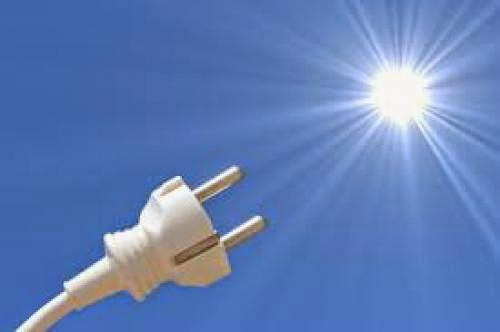
APS will spend an estimated 57-70 million placing solar panels on 3,000 Arizona rooftops, enough to generate 20 MW and meet Arizona's renewable energy mandate. Participating homeowners will receive 30 a month off their energy bills over 20 years, a total of 7,200 each.
My colleague Steven Kannelos has the scoop on the APS announcement. I contacted APS to inquire about its resemblance to Steven Chu's suggestion.
"This is not a radical model," Chu said in a February appearance at the University of Chicago, "this is the old telephone system model, where the telephone companies owned the phone, they rented you the phone for so long, they maintained it."
Nor is it radical for APS, spokesman Jenna Shaver told me.
"APS has a long track record of providing utility-owned distributed energy to customers, starting with our innovative Community Power Project in 2008," she said.
In the Community Power Project, APS maintains 125 utility-owned panels on 125 customer rooftops. "The purpose of the project is to measure system impacts and to better understand the total customer experience of distributed generation," she said.
And in 2010, APS began installing panels at schools. It operates utility-owned solar at 59 schools in 24 school districts.
Critics have called the APS proposal a Trojan horse in the utility's battle with solar-power competitors.
The rooftop program would cost roughly the same as a traditional solar farm, APS spokeswoman Jenna Shaver told me, but will produce electricity less efficiently. At solar farms panels can be built to track the sun, but on rooftops they'll be stationary.
"We prefer the rooftop solar program because it is an innovative concept that continues Arizona's solar leadership, makes rooftop solar available to customers who would not otherwise be able to afford it, and provides our customers with a simple, easy option for installing solar," Shaver said.
The Arizona Corporation Commission has mandated that regulated utilities generate 15 percent of their electricity from renewable sources by 2015. APS needs 20 MW to reach its goal, and has two proposals before regulators: the rooftop program and a more traditional solar farm.
APS's parent company, Pinnacle West, was recently ranked first among investor owned utilities in "incremental energy efficiency," a metric that measures recent gains in efficiency, but 13th in sales of renewable energy. According to Ceres, 5.35 percent of Pinnacle West's electricity sales came from renewables, a total of about 1.5 million Megawatt hours.
Source: http://www.forbes.com/sites/jeffmcmahon/2014/08/09/arizona-public-service-finds-prime-real-estate-for-solar-your-roof/








